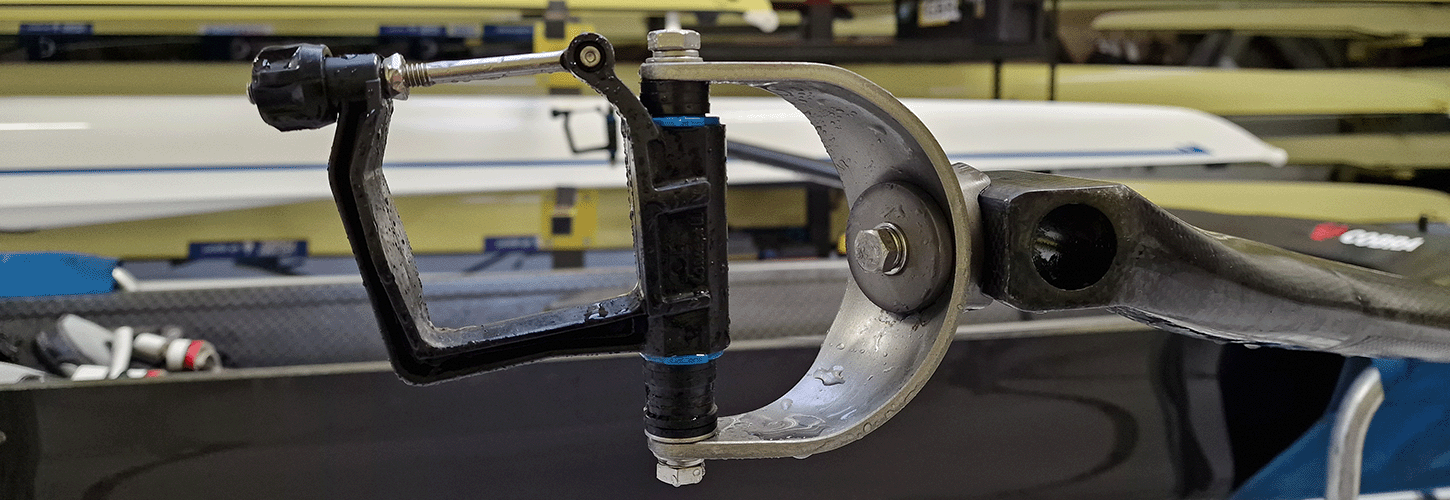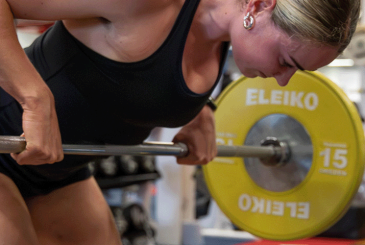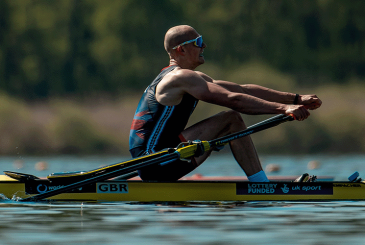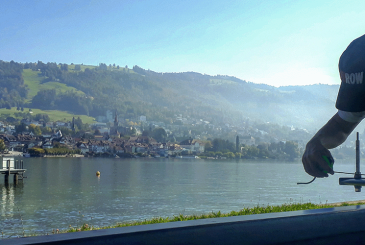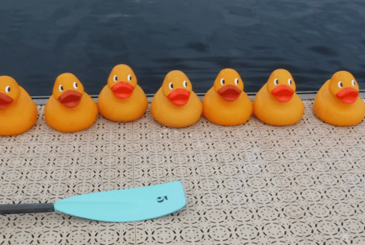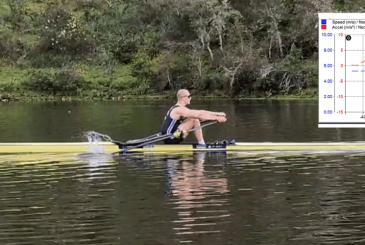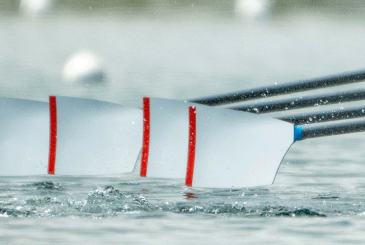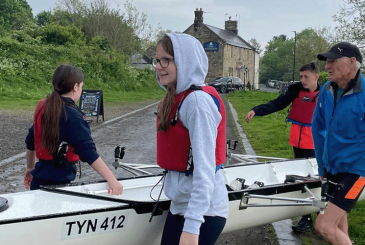‘Rigging’ can often be seen as a bit of a dark art. In the pursuit of speed and efficiency, though, the adjustability of boat components is not merely a convenience but a necessity. It allows rowers and coaches to tailor their setup to match individual biomechanics and use each athlete’s physiology most effectively. Kieran Clark explains how to fine-tune equipment to optimise a boat for a sculler or crew.
A 10-15 year old boat rigged correctly for a crew will likely produce better boat speed than a brand new one with incorrect settings.
5 key considerations for rigging rowing and sculling boats
- Power output – how strong and powerful are your crew? A boat made up of athletes who can produce 400 watts for 6 minutes will need different gearing to one that can produce 300 watts.
- Limb length – it is important to note that this is not the same as overall height. Two athletes who are both the same height could require very different rigging when they are in the boat. In the example below, both athletes are 185cm tall but the red areas show how their arm span, leg length and trunk height differ.
Here, Athlete A has a 192cm arm span and 91cm inside leg, so would likely require a wider span, longer inboard, lower gate height and stretcher further to the stern than Athlete B, who has a 181cm arm span and 84cm inside leg.
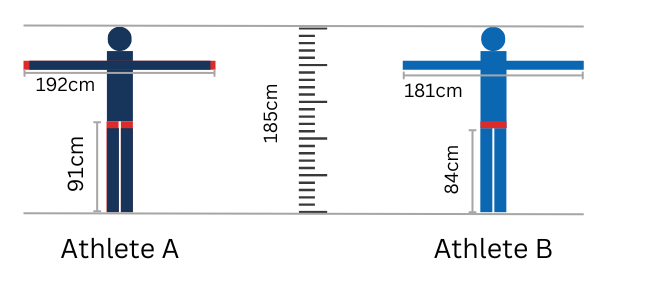
- Target angles – if you are rigging athletes to row the same angles, then you first need to determine what those angles are going to be. A good place to start is:
Sculling: 110 degrees overall; 65-70 degree catch angle and 40-45 degree finish angle
Sweep: 90 degrees overall; 55-60 degree catch angle and 30-35 degree finish angle
- Rowing style – how do the athletes move naturally?
- Racing rate – Your target racing rate, then this should be taken into consideration and the gearing adjusted accordingly.
TIP: This means that the rig for the same crew may need to be adjusted between winter 5k head races and 2k regatta races.
What is adjustable and why?
Gearing
Gearing is the ratio between the overall blade length, blade inboard and span (the distance between the pins). Similar to the gears on a bike, it is how heavy, or light, the connection feels to the athlete. On a consistent span, a longer blade will give a higher gearing and a heavier feeling than a shorter one.
If gearing is too heavy, crews may struggle to increase racing rates and to maintain consistent speed. Too light, and they may feel like they are ‘wheel spinning’ with a lack of connection to the water and a limited distance per stroke.
Stretcher angle
The right stretcher angle depends on the athlete’s ankle and hip mobility. It affects both the rock over and the ability to efficiently compress at the front end of the stroke. It is usually adjustable between 38 and 45 degrees from the horizontal (bottom of the boat). Athletes with good mobility may suit a stretcher angle of 42 to 44 degrees. However, rowing with the stretcher too shallow could cause those same athletes to over compress. Those with more limited mobility may look to be closer to 38 degrees.
Seat to heel height
Note that this is not the same as feet height, which does not take shoe size or seat height into account. Taller rowers with longer limbs will need a greater seat to heel height than shorter athletes with shorter limbs. Feet height and seat height can both be adjusted to increase or decrease this. However, you should be careful not to raise the mass of a crew or sculler too high above the boat. A typical range for this is 15-20cm.
Bow/stern trim
A boat that runs bow-heavy or stern-heavy is not moving as efficiently as one that is properly ‘trimmed’ and runs level. Modern boats with wing riggers offer more options to move riggers, stretchers and therefore the mass of the rowers forwards and backwards. This is one of the easiest changes to measure by eye. This can also be achieved by moving rowers around in different seats to spread the mass out more evenly down the hull.
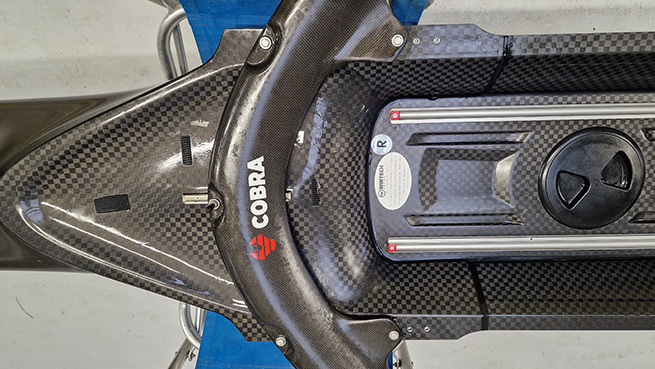
Stern pitch
Stern pitch – often known just as ‘pitch’ is the angle of the swivel. It defines the angle at which the blade is presented to the water. Stern pitch is usually 3-5 degrees. This means that the top edge of the blade is closer to the stern than the bottom edge. This allows a cleaner extraction of the blade at the finish.
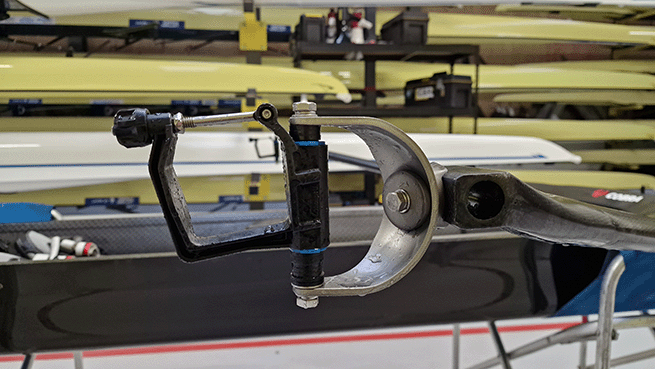
Lateral pitch
Lateral pitch is the sideways angle of the pin (around which the swivel sits). Usually 0-2 degrees with the top end of the pin slightly further away from the athlete than the bottom. Lateral pitch gives more pitch at the catch and less pitch at the finish. For example, 4 degrees stern pitch combined with 1 degree lateral pitch would give 5 degrees at the catch, 4 degrees through the line of work, and 3 degrees at the finish.
Conclusion
Biomechanics, as previously explored, combines an understanding of the forces and movements of the rowing stroke and the natural movement and output of the individual athlete. To maximise speed in rowing, rigging adjustments are the essential link between the human and the boat. The right rig allows athletes to deliver their best power in the most efficient positions.
All athletes are built differently. Therefore you probably need to rig each seat differently to achieve the fastest and most cohesive crew.
How to rig boats
For practical guidance on how to rig boats to optimise arcs and other key biomechanics measures, Visit the Rigging section of RowHow.


